
|
|
|
ROTSE observation of 2010 AL30
On Jan. 13th 2010, ROTSE-IIIb (located at McDonald Observatory, Texas) observed near-Earth object
2010 AL30 from 05:16 until 09:11 (UT), several hours before it reached perigee
(130,000 kilometers, which is only 1/3 distance to the Luna). A total of 413 images were obtained.
Different sets of images were constitute with different exposure duration,
range from 5 seconds, 20 seconds and 60 seconds. After analyzing the data, we identify the object
rotates with a period of ~8.69 minutes.
|
|
 5 seconds exposure movie. Click here to download an AVI version. |
|
|
2010 AL30 was discovered on January 10 by a 1.0-m telescope at the Lincoln Laboratory ETS (observers M. Blythe, G. Spitz, R. Brungard, J. Paige, P. Festler) in New
Mexico, as a part of the Lincoln Near-Earth Asteroid Research (LINEAR) survey.
The discovery was published in MPEC 2010-A59
issued on Jan. 11. Although NASA officially declared it as an
'Apollo class' asteroid, there seems to be some ambiguity as to what 2010 AL30
really is. The strange one year orbit suggest that it originated from Earth, perhaps an old and used rocket booster.
The figure on the right shows the trajectory of 2010 AL30 as it passed the Earth on Jan. 13
(See original from NASA).
Also see here for a orbit movement demonstration movie from YouTube website.
|
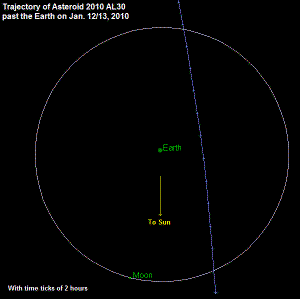
|
|
ROTSE-IIIb observed 2010 AL30 on Jan. 13th from 05:16 until 09:11 (UT)
before it dropped below the horizon. A total of 413 images were obtained. Within these
images, different exposure time were used for different sets: 20 seconds exposure for both
yellow triangle and black triangle, 5 seconds exposure for blue triangle, black square
and red circle, the rest sets of images use 60 seconds exposure time. Due to the rapid relative motion
of the object, it appears as a streak in the CCD image, even with the exposure
time as short as 5 seconds. The streak can cover hundreds of pixels in length for the 60 seconds images.
Because of the extended streak length of the object in the CCD images, photometry is very difficult. Traditional aperture photometry doesn't work at all. Primarily because many background stars overlap with the extended streak, interfering with brightness estimates. To minimize these effects, we adopted a variant of the standard ROTSE data processing within the IDL software environment. First of all, the raw images were bias subtracted and flat corrected. After that, the images were subtracted with a reference image taken from the same data set. This code was developed by Yuan and Akerlof (2008). The advantage of this method is that it minimizes the effect of background stars. The image intensity was summed along the streak direction, projecting the image from two dimension to one. Ideally, the histogram of this one-dimension distribution should be a Gaussian. With this assumption, the integrated brightness was obtained from the fitted Gaussian parameters A similar method was used to obtain the brightness of the reference stars without the one-dimension projection. Real brightness of the object was thus tied to the reference stars. Note that although ROTSE do not use any filters, we use the USNO A2.0 catalog R band magnitude to do the calibration. There may be some offset between R band and ROTSE wide band, which might vary over different sets of images. After obtaining the light cure, the periodicity of the object was examined by a least-squares fitting programs based on cubic B-splines developed by Akerlof et al. (1994). We estimated a rotation period of 8.69 minutes for the object, which is quite rapid. (As a comparison, that's not nearly as fast as the fastest spinning object discovered in the solar system to date -- that record goes to the near-Earth asteroid 2008 HJ with a rotation period of only 42.7 seconds. (from discovery news)). |
|
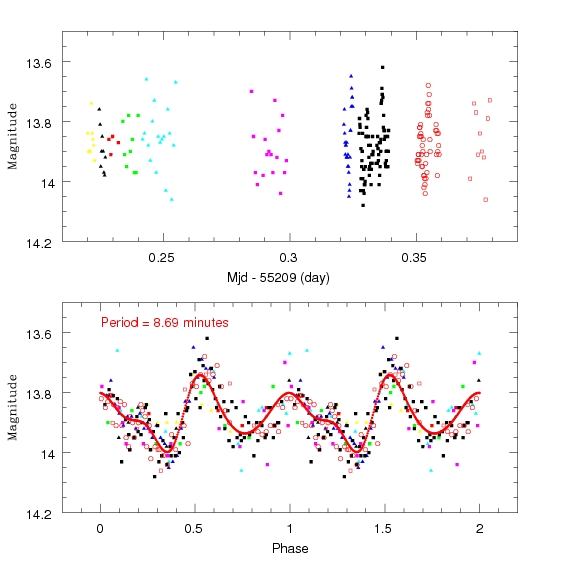
|
|
| Here are more movie and pictures of 2010 AL30 taken by ROTSE. | |
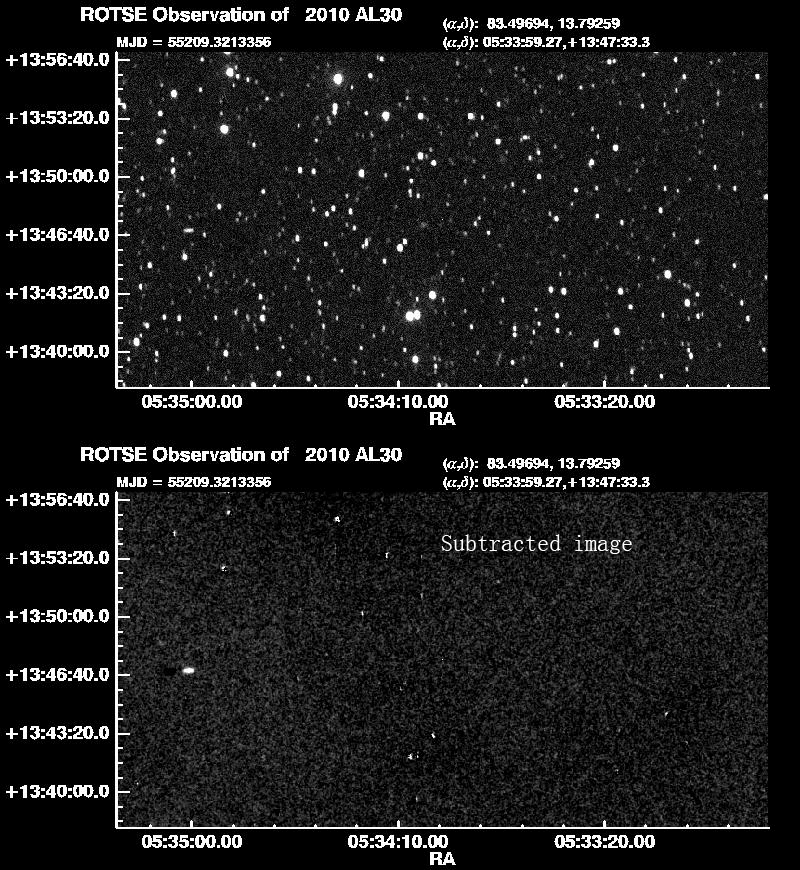 5 seconds exposure movie. Click here to download an AVI version. |
|
| 60 seconds exposure pictures. | |
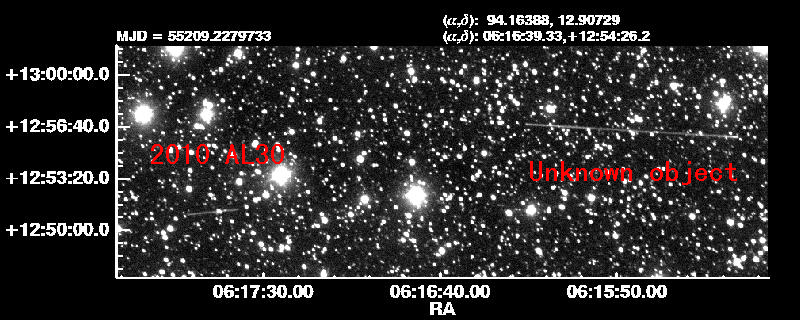
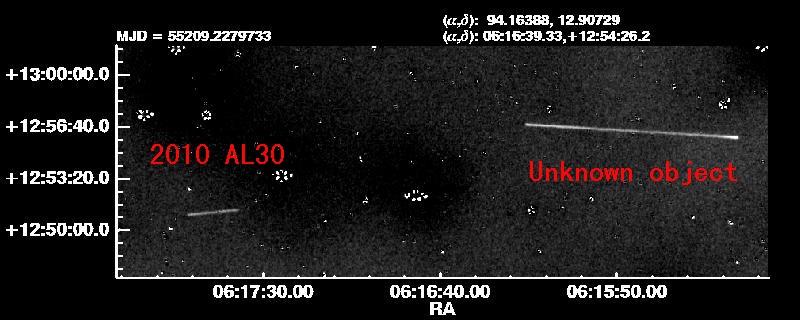
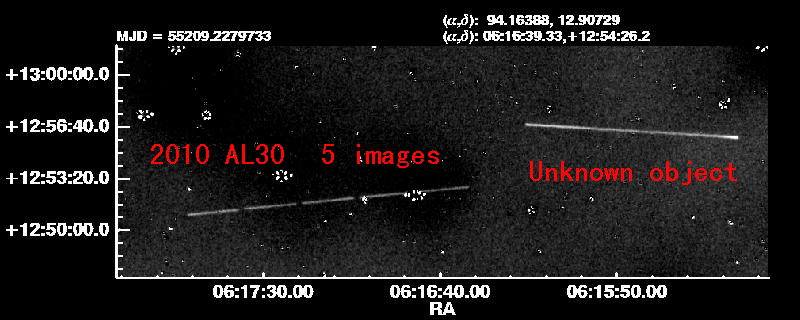
|
|